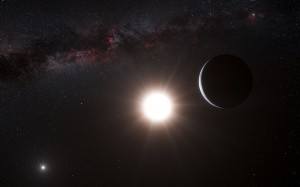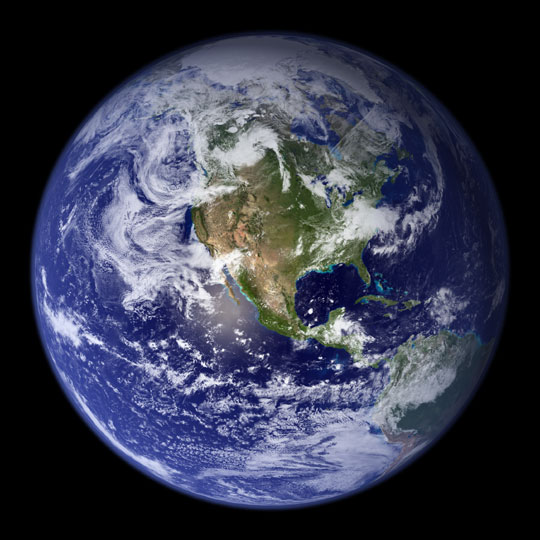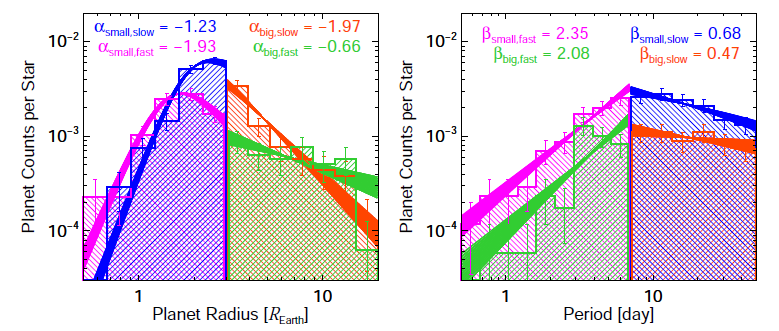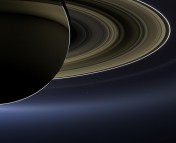- Title: Circumstellar Habitable Zones of Binary Star Systems in
the Solar Neighborhood - Authors: S. Eggl, E. Pilat-Lohinger, B. Funk, N. Georgakarakos and N. Haghighipour
- First author’s institution: University of Vienna
The Big Picture

An artist's conception of the exoplanet Alpha Centauri Bb and the two stars in the Alpha Centauri system. Credit: L. Calcada / N. Risinger / ESO
As you probably learned last week, there’s a newly discovered planet in the solar neighborhood. Even cooler, the planet (Alpha Centauri Bb) is an Earth-mass planet orbiting a star in a binary (possibly triple) star system. Alpha Centauri Bb orbits the star Alpha Centauri B once every 3.2 days, so the planet’s surface is likely molten. Even though Alpha Centauri Bb is far too hot to support life, the exciting discovery of an Earth-mass planet in a nearby multiple star system raises the question of whether habitable Earth-mass planets could also exist in binary star systems.
In this paper, Eggl et al. delve into that question in detail by calculating the habitable zones around stars in the 19 nearest binary systems and determining whether orbits within the habitable zone would be stable. They find that Earth-size planets could exist on stable orbits in 17 of the 19 systems considered. That impressive success rate (89%) implies that real Earth-mass habitable planets in binary star systems might be almost as common as planets orbiting binary stars are in science fiction!
The Details
Eggl et al. begin their analysis by taking a census of nearby binary star systems. Previous research has demonstrated that over half of the stars in the solar neighborhood are in binaries, so Eggl et al. had a large sample to consider. They started with a list of all of the detached (non-interacting) binaries within 31 parsecs with orbital separations between 1-100 AU. They then restricted the list of systems to only those systems with well-determined stellar and orbital parameters. The initial sample included 313 systems, but the selection cuts narrowed down the sample to 19 systems.
For each of the 19 systems, Eggl et al. then calculated the position of the habitable zone. Planets in binary systems can either orbit one member of the binary in a circumstellar orbit or both stars of the binary on a circumbinary orbit. In this paper, Eggl et al. consider circumstellar orbits, so they calculate separate habitable zones for each member of the binary systems. Assuming circular orbits, the habitable zone around a single star is simply the distance at which liquid water would be stable on the surface of the planet. Traditionally, this distance is determined by assuming an Earth-like atmosphere and albedo (reflectively) for the exoplanet and performing a simple radiative balance calculation.
In binary systems, however, the situation is more complicated because the gravitational influence of the second star can influence the orbit of the planet. Additionally, the flux from the other star might alter the position of the habitable zone if the other star is much brighter than the planet’s host star. Eggl et al. developed a formula to calculate the position of the habitable zone in binary star systems in a previous paper and they apply that formula to each of the binary systems considered in this paper. They then compare the calculated positions of the habitable zones around star to the maximum stable semimajor axis around each planet (calculated using work by dynamicists in previous papers) in order to determine whether planets could survive on stable orbits within the habitable zones of each of the stars.
The final results for each of the 19 systems are plotted in the figure below. The left panel displays the habitable zones around the primary (more massive) stars in each binary and the right panel displays the habitable zones around the secondary stars. The spectral type of each star is indicated to the right of the plot for each star. In the figure, the blue, green, and yellow regions indicate the position of the habitable zone using three different definitions. The blue region is the most conservative estimate and corresponds to the requirement that the amount of flux received by the planet is always within the “habitable range.” The green region marks a slightly more lenient definition of the habitable zone in which the average flux received by the planet plus or minus one standard deviation is within the habitable limits. The yellow region is the most lenient definition and requires that the average flux received by the planet during its orbit is within habitable limits. The shaded regions mark unstable separations and the red regions mark the distances at which a planet could survive but would receive either too much or too little flux to be habitable.

Calculated habitable zones around the primary star (left panel) and secondary star (right panel) in 19 nearby binary systems. The blue regions mark the "permanent habitable zone", the green regions mark the "extended habitable zone", and the yellow regions mark the "averaged habitable zone." Stable regions outside of the habitable zone are shaded red and unstable regions are dashed. The dashed (solid) "I" symbols mark the inner (outer) boundaries of the traditional habitable zone. Figure 1 from Eggl et al. 2012.
In all but two systems (HIP 51986 and HIP 87895), Eggl et al. find that habitable Earth-mass planets could orbit stably within the habitable zone of at least one of the stars in the binary. They remark that this high occurrence rate is promising for future searches for habitable planets in binary systems and suggest starting with HIP 14699, 30920, 106972, 114922, and 116132 because the radial velocity amplitudes should be highest for those systems. Now that astronomers have detected one Earth-mass planet in a binary star system and Eggl et al. have demonstrated that Earth-mass planets could exist at larger separations, the outlook looks bright for future announcements of Earth-mass planets in the habitable zones of binary stars.





Trackbacks/Pingbacks